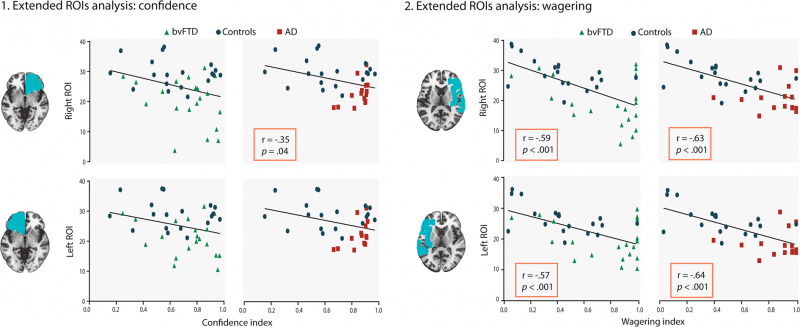Abstract:
Monitoring is a complex multidimensional neurocognitive phenomenon. Patients with fronto-insular stroke (FIS), behavioural variant frontotemporal dementia (bvFTD) and Alzheimer’s disease (AD) show a lack of self-awareness, insight, and self-monitoring, which translate into anosognosia and daily behavioural impairments. Notably, they also present damage in key monitoring areas. While neuroscientific research on this domain has accrued in recent years, no previous study has compared monitoring performance across these brain diseases and none has applied a multiple lesion model approach combined with neuroimaging analysis. Here, we evaluated explicit and implicit monitoring in patients with focal stoke (FIS) and two types of dementia (bvFTD and AD) presenting damage in key monitoring areas. Participants performed a visual perception task and provided two types of report: confidence (explicit judgment of trust about their performance) and wagering (implicit reports which consisted in betting on their accuracy in the perceptual task). Then, damaged areas were analyzed via structural MRI to identify associations with potential behavioral deficits. In AD, inadequate confidence judgments were accompanied by poor wagering performance, demonstrating explicit and implicit monitoring impairments. By contrast, disorders of implicit monitoring in FIS and bvFTD patients occurred in the context of accurate confidence reports, suggesting a reduced ability to turn self-knowledge into appropriate wagering conducts. MRI analysis showed that ventromedial compromise was related to overconfidence, whereas fronto-temporo-insular damage was associated with excessive wagering. Therefore, joint assessment of explicit and implicit monitoring could favor a better differentiation of neurological profiles (frontal damage vs AD) and eventually contribute to delineating clinical interventions.


